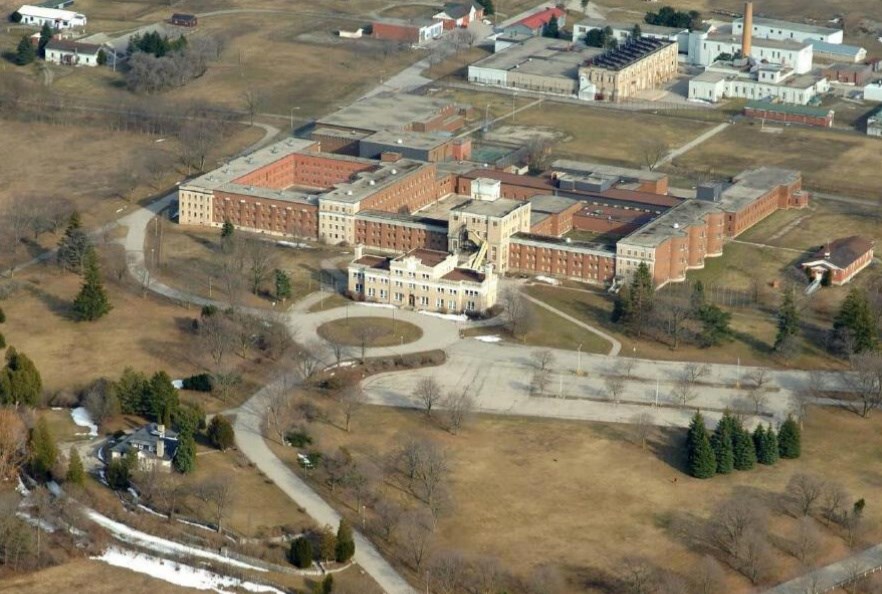In an effort to preserve the cultural heritage significance of the former Guelph reformatory lands for future generations, city council unanimously agreed to launch the process of protecting specific features of the property as well as a study that could cover the area as a whole.
“Let’s do this proactively. Let’s not be reactive later on,” Coun. Cathy Downer said of initiating the process of designation under Part IV and study of potential Part V designation under the Ontario Heritage Act. “Taking time now … provides a better outcome for the whole property.”
City staff recommended designation of individual elements under Part IV, which was unanimously approved, followed by a motion from Downer to begin the process of the “more holistic” Part V designation, which was also unanimously approved.
Prior to those Monday evening motions, council heard from 32 delegates and received nearly 100 pieces of correspondence ahead of the meeting. Nearly all of them agreed the largely provincially-owned former reformatory lands hold historical significance and need to be preserved for community enjoyment, though a majority called on council to move forward with both Part IV and Part V designations.
Only two written submissions indicated a preference for Part IV alone, one of which was from Infrastructure Ontario which manages provincial assets and asked the city to begin the heritage preservation process in order to prepare the property for sale.
Many delegates and written submissions specifically expressed support for the Heritage Guelph (HG) recommendation of both Part IV and Part V.
“This is a decision that can only be made once but impacts generations,” commented 15-year-old Lily Merrill, who spoke in favour of the HG recommendation.
“I’m unable to find any disadvantage of merit to adding Part V,” said Lin Grist, who said actions stemming from heritage protection policies are “based on (the) interpretation” of planners who often disagree on their meaning.
“Leaving the decision of what should be protected and what should not up to the private developer could lead to a significant loss of heritage,” added Simon Steckley, a tradesperson who specializes in heritage work. “I hope Guelph can do right for future generations.”
During its April meeting, HG unanimously approved a motion calling for the property and surrounding areas to be studied for potential designations under sections of the Ontario Heritage Act.
City staff contend designation under Part IV, in addition to a heritage conservation easement agreement also approved as part of the staff recommendation, provides a higher level of protection of the heritage attributes of a property as the easement agreement contractually commits property owners to protect the defined heritage attributes of the property in perpetuity.
Cultural heritage resources are also offered protection under the Guelph Innovation District (GID) secondary plan, they noted, which requires completion of a cultural heritage resource evaluation report, with potential for additional study and recommendations on ways to avoid or minimize negative impacts on cultural heritage resources in development areas.
That block plan process depends on a prospective developer to determine what heritage aspects should be preserved outside of what’s covered in the Part IV designation, HG chair P. Brian Skerrett explained.
“There’s a baseline of nothing. A Part V designation presumes heritage value,” he said. “It doesn’t prevent development, but it assumes heritage value and then the onus is on the proponent to prove that there is none.”
During its May meeting, the advisory committee passed a motion asking city council to either prioritize studies for a heritage cultural district for the former reformatory lands ahead of one for Ward West (the western portion of The Ward neighbourhood), or do the studies concurrently.
The Ward West study was approved earlier this year.
Council opted for the prior, putting the Ward West study on hold until the former reformatory lands study is complete and there is money in the budget to turn back to it.
In addition to that, and in response to numerous public comments, Mayor Cam Guthrie proposed a motion calling for council to direct him to write a letter to the province stressing the importance of protecting the property’s heritage value and asking it to ensure “as much public use as possible” for the former reformatory lands following sale.
That motion, too, received unanimous support.
The former Guelph reformatory lands consist of about 90 hectares of property that include a set of buildings constructed in the 1910s and 1920s for detention and rehabilitation purposes. Though the province owns much of the original reformatory property, it no longer owns all of it. Through the years parcels have been sold off, with pieces now owned by the City of Guelph, along with Cargill.
Those non-provincially owned pieces will be investigated for cultural heritage significance as part of the Part V study. Staff had recommended several features on those parcels be included on the municipal registry of non-designated properties, which gives council 60 days to consider formal designation once a demolition permit has been applied for.
The reformatory was fully decommissioned in 2001 and the property has been vacant since 2014, when the Ministry of Community Safety and Correctional Services completely left the site. With no identified uses for it, the provincial government has declared the property to be surplus.
